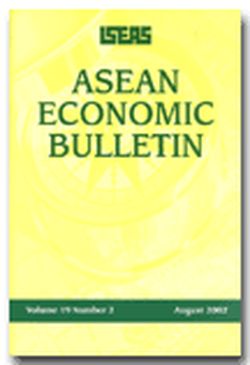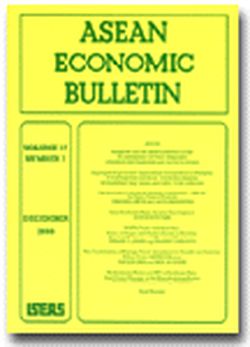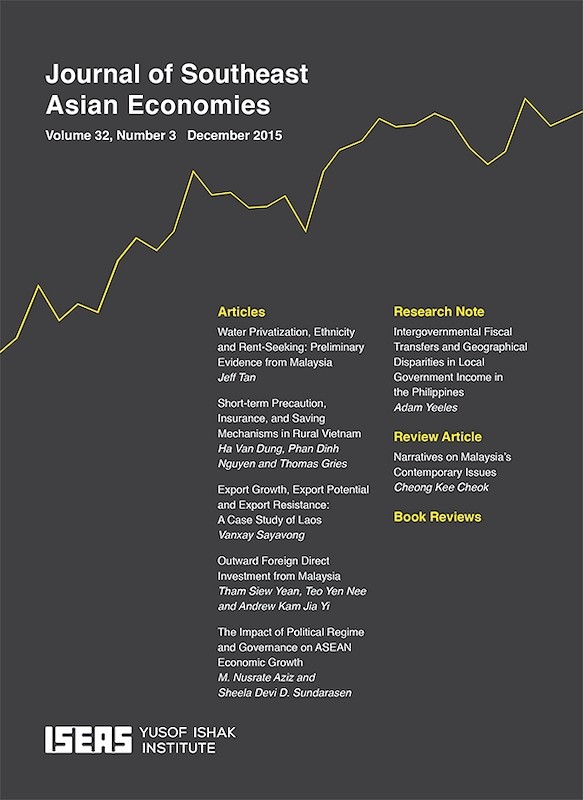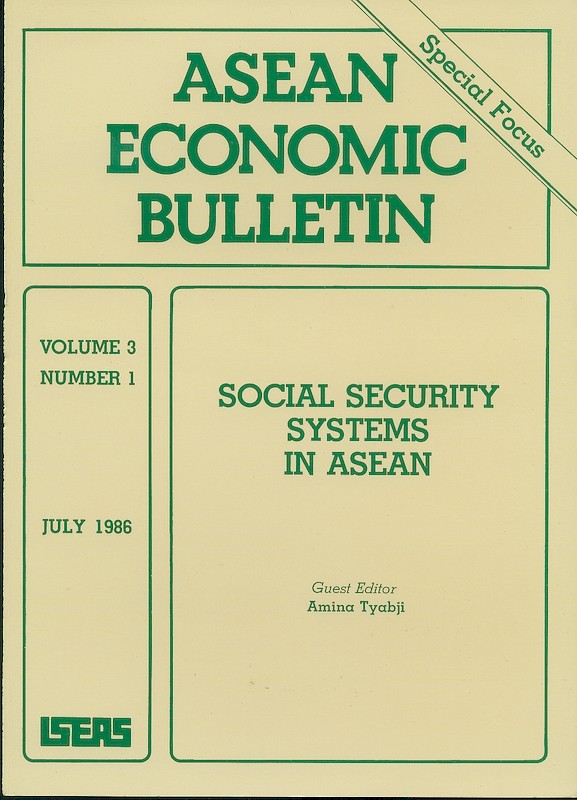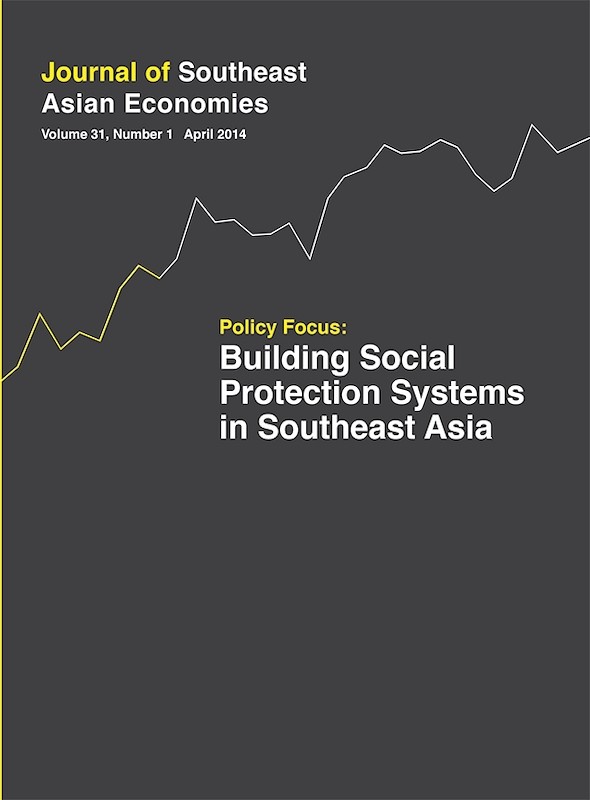ASEAN Economic Bulletin Vol. 22/3 (Dec 2005)

Date of publication:
January 2006
Number of pages:
104
Code:
AE22/3
Contents
-
ASEAN Economic Bulletin Vol. 22/3 (Dec 2005)
-
Preliminary pages
- ARTICLES
-
What Is a Single Market? An Application to the Case of ASEAN, by Peter J Lloyd, author see abstractFour regional trading agreements have now set a goal of a single market. These are the EU, CARICOM, ASEAN, and CER agreements. However, in none of them is the goal well defined. This paper defines a single market in terms of the concepts of economic integration. An area is completely integrated if the Law of One Price holds for all commodity and factor markets. The paper examines the conditions which are necessary for the Law to hold. It then measures the progress towards this goal in seven regional trading agreements. It examines the steps ASEAN needs to take if it is to be a single market.
-
The Challenge of Economic Integration for Transitional Economies of Southeast Asia: Coping with Revenue Losses, by Jose L Tongzon, Habibullah Khan, authors see abstractThis paper seeks to estimate the revenue losses of CLMV countries (Cambodia, Lao PDR, Myanmar, and Vietnam) due to the implementation of CEPT (Common Effective Preferential Tariff) scheme resulting from their participation in the ASEAN Free Trade Area (AFTA) and to suggest appropriate policies for compensating the losses. It is evident that all CLMV countries, with the notable exception of Myanmar, stand to lose significant amounts of customs revenue from ASEAN imports due to the scheme. However, the overall government revenue (tax as well as non-tax) is likely to rise substantially in all CLMV countries despite CEPT rate reductions. The countries should, therefore, stay committed to the full implementation of CEPT scheme despite temporary decline in their revenues, argued in the paper.
-
Public Debt Sustainability and Its Macroeconomic Implications in ASEAN-4, by Anthony J Makin, author see abstractPublic debt levels in Indonesia, Malaysia, Thailand, and the Philippines (the ASEAN-4) significantly exceed pre-Asian crisis levels due to persistently large fiscal deficits and bank recapitalization measures. This article algebraically derives key formulas and presents graphical techniques for understanding and assessing the sustainability of public debt and its macroeconomic significance. Using recent data, it shows that central government public debt levels have recently stabilized in the ASEAN-4 under prevailing macroeconomic conditions and fiscal settings. Yet, the Philippines and Indonesia still require substantially higher primary surpluses to reduce their public debt to GDP ratios to internationally recommended levels over the medium term.
-
Institutional Constraints and Private Sector Development: The Textile and Garment Industry in Vietnam, by Cuong M Nguyen, Quan V Le, authors see abstractThe argument for the privatization of state enterprises is based on the superior efficiency of private over state ownership. This argument is only true when it ignores the institutional constraints including insecure property rights enforcement, land, credit, and export-quota policies. By using a survey of ninety-six textile-garment enterprises in Vietnam, private and foreign enterprises were found to face serious institutional constraints. These constraints explain why private and foreign enterprises have inferior profitability indicators compared with state enterprises; and why total factor productivity of private enterprises is low compared with state enterprises. Without removing these institutional constraints, the privatization of state enterprises may not bring about greater operational efficiency.
-
The Relationship between Population and Economic Growth in Asian Economies, by Wong Hock Tsen, Fumitaka Furuoka, authors see abstractThe main aim of the study is to investigate the relationship between population and economic growth in Asian economies. Generally, the results of the Johansen (1988) and Gregory and Hansen (1996) co-integration methods show that there is no long-run relationship between population and economic growth. Nonetheless, the study finds that there is bidirectional Granger causality between population and economic growth for Japan, Korea, and Thailand. For China, Singapore, and the Philippines, population is found to Granger cause economic growth and not vice versa. For Hong Kong and Malaysia, economic growth is found to Granger cause population and not vice versa. For Taiwan and Indonesia, there is no evidence of Granger causality between population and economic growth. On the whole, the relationship between population and economic growth is not straightforward. Population growth could be beneficial or detrimental to economic growth and economic growth could have an impact on population growth.
- RESEARCH NOTE
-
Building Institutional Capacity in Southeast Asia: Regional Governed Interdependence, by Kaoru Natsuda, Gavan Butler, authors
- BOOK REVIEWS
-
BOOK REVIEW: After the Storm: Crisis, Recovery and Sustaining Development in Four Asian Economies, edited by K. S. Jomo., by Prema-Chandra Athukorala, author
-
BOOK REVIEW: Achieving Sustainable Communities in a Global Economy: Alternative Private Strategies and Public Policies, edited by Ralph D. Christy., by Robert L Curry, Jr., author
-
BOOK REVIEW: Malaysia Bail Outs? Capital Controls, Restructuring and Recovery, Edited by Jomo K. S., Wong Sook Ching, and Chin Kok Fay, by Ng Boon Yian, author
-
BOOK REVIEW: Asian Economic Cooperation and Integration: Progress, Prospects and Challenges, by Asian Development Bank, by Chang Chiou Yi, author
-
BOOK REVIEW: Deforesting Malaysia: The Political Economy and Social Ecology of Agricultural Expansion and Commercial Logging, by Jomo K. S., Chang Y. T., Khoo K. J. et al., by Lee Poh Onn, author

